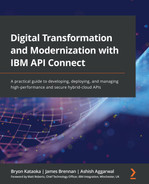Chapter 16: What's Next in Digital Transformation Post-COVID?
Alas, all good things must come to an end, but what about Digital Transformation? As you learned in Chapter 1, Digital Transformation and Modernization with API Connect, business changes are constantly occurring, and what business change has had more impact than COVID-19? Here's a quick review of the key business changes that we are coming across:
- New start-ups are going digital at inception.
- Customers/consumers are changing and so are their expectations. Customer loyalty is waning.
- Information and customer feedback affect your products.
- Innovations are changing rapidly. You need to keep up or be left behind.
- The delivery of goods has drastically improved and that affects pricing.
- Similar products have made innovation and pricing differences indifferent. Best-of-breed is no longer a consideration.
As you look at each item, I'm sure you can already sense the impact that COVID still has on businesses. Companies had to turn on a dime to remain viable. Others needed to increase productivity and expand in ways never imagined. Remote work forced many organizations to rethink the need for office space and proceed using video conferencing applications to maintain continuity within operations. The automation of operations became even more necessary as employees were displaced by remote work and the challenges of getting remote workers online increased. These changes forced even existing products to improve security and expand capabilities. An example would be Zoom. Its explosion during COVID reached new users but exposed security holes that required patching. The companies who already could deliver goods and services did extremely well in these difficult times. It is now common to see packages delivered to the door of households that never took advantage of that capability before.
Digital transformation continues for the same reasons it began. Businesses change and improve and those who did not have either closed or have suffered irreparable damage. So, as digital transformation moves beyond the COVID-19 pandemic, there are still more capabilities and changes on the horizon. In this chapter, we are going to cover new topics and revisit some topics that will continue to drive businesses post COVID. The areas you will learn about are the following:
- Understanding API Connect late-breaking changes
- Understanding API Connect and hybrid cloud – CP4I, OpenShift
- Understanding AIOps
- Exploring 5G Edge computing
There will probably be more innovations beyond these but to dovetail effectively with your API Connect experience these are extremely important since they are extending digital transformation to an even greater extent. When you finish with the chapter, you will have new knowledge and skills on how to continue with your transformation journey. Those skills are as follows:
- Where to check for updates and fixes
- How hybrid cloud is utilized to bridge the gap during transformation
- How automation is assisting with Modernization and Transformation
- Where 5G technology is opening new Digital opportunities.
Let's learn about these new capabilities and envision how they may drive innovation and capabilities in your organization.
Technical requirements
In this chapter, there isn't any code walk-through so there are no technical requirements that need to be downloaded from GitHub. This being the final chapter, you should ensure you have downloaded all previous chapters in case there have been updated resources due to any late-breaking changes while you have been reading.
Understanding API Connect late-breaking changes
In the course of authoring this book, over a period of 5 months, IBM has provided several updates to API Connect for a variety of reasons. We discussed the versioning of API Connect releases in Chapter 2, Introducing API Connect.
A number of them address security and prevent cybercriminals from disrupting your business, but the majority of these updates provide improvements and bug fixes. During the 5 months, we have seen a modification release, two fix pack releases, and one -ifix release. Here is a list of those updates. This book started with version 10.0.1.1:
- Version 10.0.1.1
- Version 10.0.1.2
- Version 10.0.1.2-ifix1
- Version 10.0.2.0 (Continuous Deployment)
- Version 10.0.3.0 (Continuous Deployment)
- Version 10.0.1.5 (rollup of v10.0.2.0 and v10.0.3.0)
Each one of the releases addresses bug fixes and additional product features. Care should be taken when updating to certain releases. In some cases, the releases must be implemented in sequence, and in other cases, they contain cumulative updates. You should refer to the IBM Documentation page, https://www.ibm.com/docs/en/api-connect, anytime a new release is announced to determine whether there are special considerations.
Note
IBM refers to supported versions of API Connect as Long-Term Support (LTS). As new features are developed, IBM releases a Continuous Deployment (CD) version so customers can try out the new features. These CD releases are not supported. v10.0.2.0 and v10.0.3.0 were CD releases but are now included in v10.0.1.5.
You should also pay attention to what's new. In some cases, there could be updates that improve how configurations are applied. An example is how custom user policies are applied. In version 10.0.1.5, you can now apply the custom policies with the user interface. In previous releases, you needed to install them using the CLI. Also, keep in mind that with any release there are supporting components such as the CLI that require download and re-distribution. This applies to customers using DevOps to build and deploy artifacts using the CLI commands. In version 10.0.1.5, IBM made performance enhancements, as well as a number of other enhancements to improve the developer's experience.
It is important to have a good understanding of how IBM provides fixes and upgrades. It provides you with the knowledge on how often fixes are released and the choices you have to apply them. You can refer to those upgrades by visiting the What's new in the latest release section of the IBM documentation: https://www.ibm.com/docs/en/api-connect/10.0.1.x?topic=overview-whats-new-in-latest-release-version-10015.
Note: v10.0.1.5 Enhancements
There is a considerable amount of changes released in v10.0.1.5. A few noteworthy updates are vertical and horizontal pod gateway scaling, GraphQL enhancements, and performance enhancements, to name a few.
Given that digital transformation and modernization are taking advantage of cloud capabilities you should be aware of how API Connect is continuing advances towards hybrid cloud and multi-cloud implementations. Having this knowledge will help your organization plan for future strategies for cloud implementations and the approaches that are provided. Having a good understanding of how API Connect merges into a hybrid cloud will be important. You will learn that next.
Understanding API Connect and Hybrid Cloud
In Chapter 2, Introducing API Connect, we discussed the deployment models of API Connect. IBM has placed considerable emphasis on the hybrid cloud and that can't be any more apparent than its acquisition of Red Hat for $34 billion. IBM's hybrid cloud strategy and its Watson AI technology are becoming a differentiator in the corporate hybrid architectural strategy and Digital Transformation journey.
To be successful in hybrid cloud, customers will be looking for a common platform and the ability to continue integration with new cloud applications and on-premise systems of record.
Let's begin with the OpenShift common platform from Red Hat.
OpenShift
Is there a notion of an open hybrid cloud architecture? With containerization and open source Kubernetes, you may believe that there is, but Kubernetes in each cloud provider has its challenges. There are nuances in every implementation and Kubernetes is a huge paradigm shift. Similar to Object-Oriented Programming, there is an associated learning curve that comes with Kubernetes that makes customers cautious.
Consider the challenges your company would face to undertake a Do-it-yourself (DIY) Kubernetes implementation. Here is a short list:
- Building a full DIY Kubernetes stack
- Testing your Kubernetes stack
- Staying abreast of Kubernetes changes
- Patching security CVEs (weekly)
- Troubleshooting Kubernetes stack problems
- Repairing Kubernetes problems
The big question is do you have the expertise in-house? If not, do you increase staff to find qualified resources? Consider the complexities of implementing Kubernetes shown in Figure 16.1:
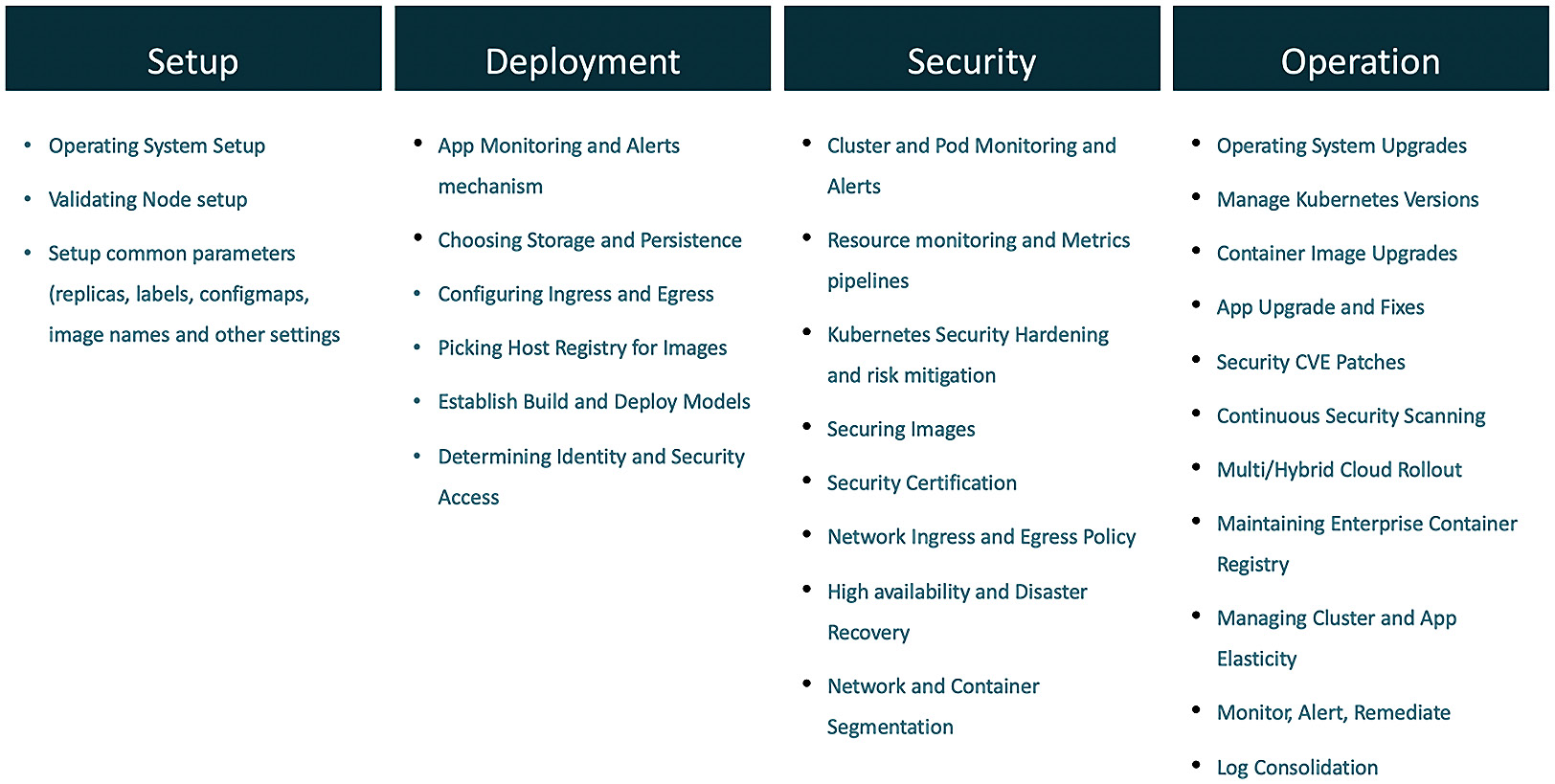
Figure 16.1 – Complexity of Kubernetes implementation
All of these unplanned complexities warrant looking for something simpler and supporting critical functionality such as security, monitoring, and easy upgrades. This is where Red Hat OpenShift makes sense.
OpenShift is deployable both on cloud and on-premises. Utilizing the OpenShift platform addresses many of the issues identified in this section. Figure 16.2 highlights the difference between what you gain by standardizing on OpenShift versus doing it on your own with Kubernetes:
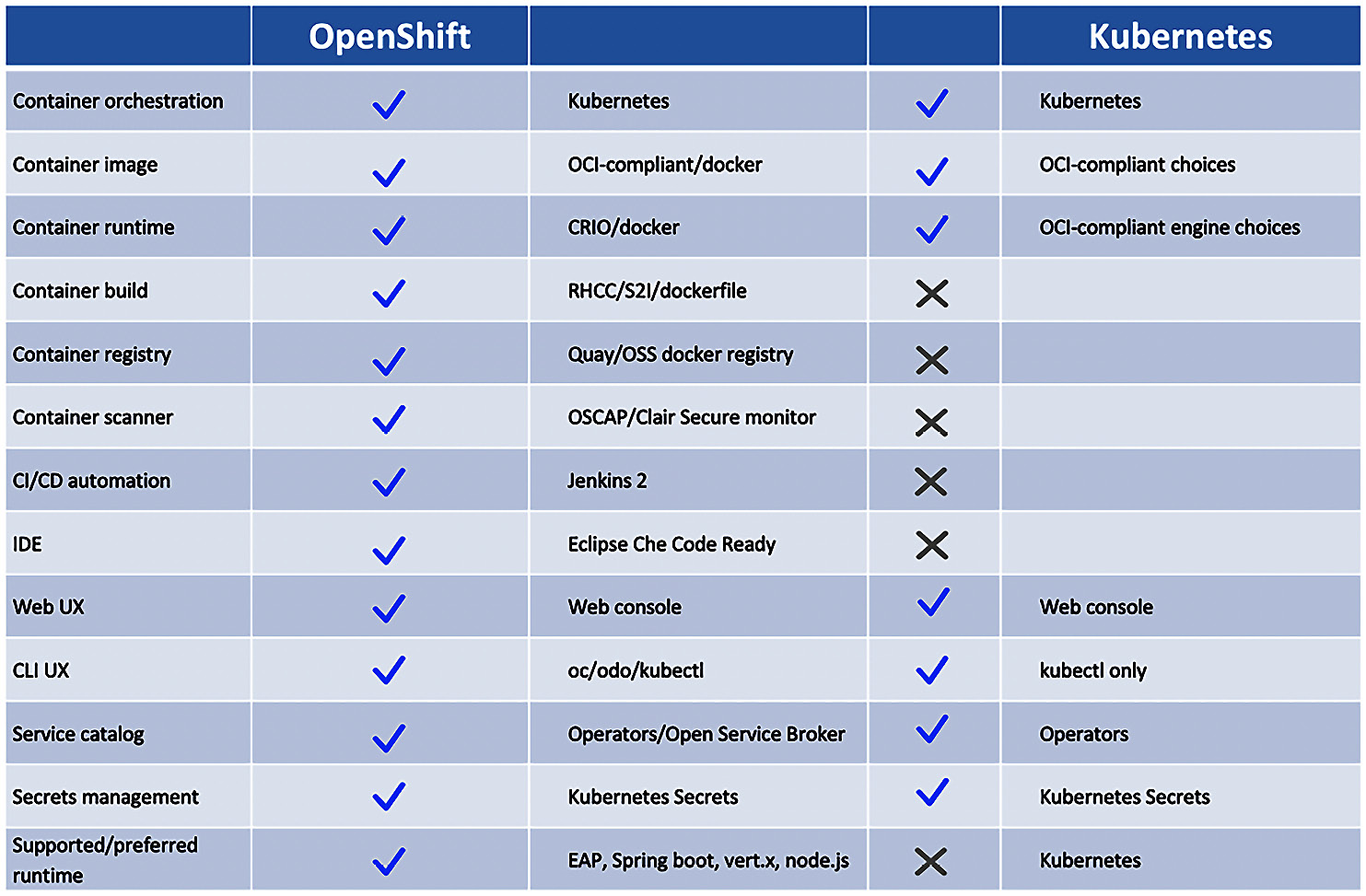
Figure 16.2 – OpenShift and Kubernetes comparison
As you can see in Figure 16.2, not only is it easier to use Kubernetes under OpenShift but you also get additional critical components for your digital transformation journey such as a web user experience (Web UX) for your administrators and developer tools such as Spring Boot, a built-in capability for DevOps, and container build capabilities such as source to image (S2I).
Wherever you choose to deploy, whether in the cloud, on-premises, or hybrid, having a common platform has its benefits. Figure 16.3 provides a good picture of those choices:
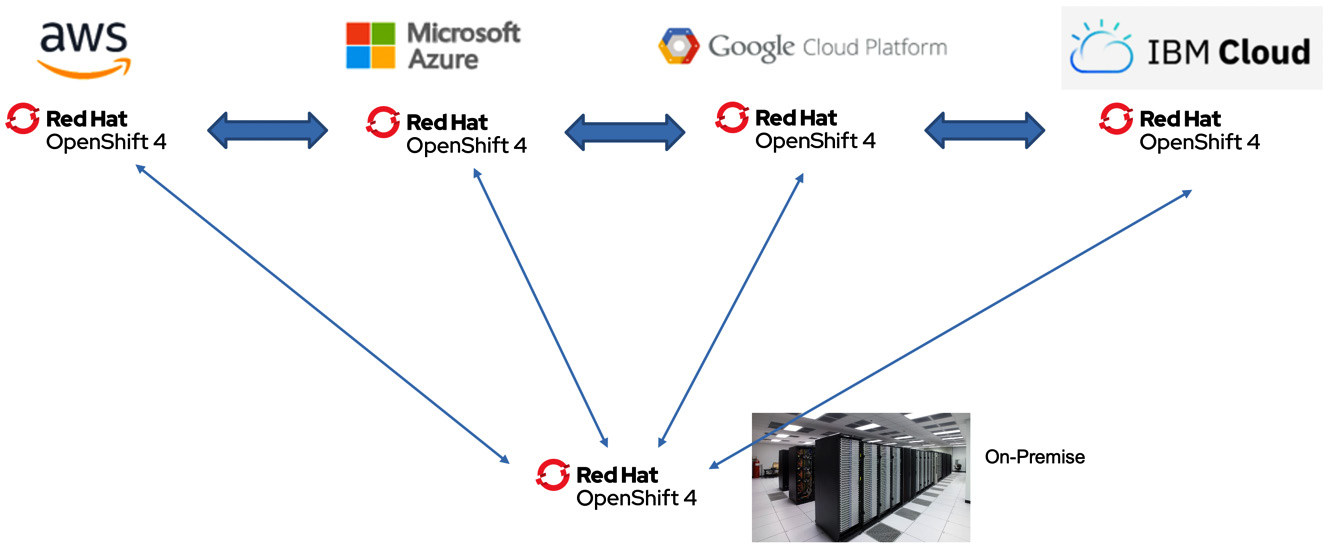
Figure 16.3 – OpenShift on multiple clouds and on-premise
The strategic decision is two-fold. Having a choice of clouds provides your organization the flexibility to change to another cloud because OpenShift is portable in a write once, run anywhere open hybrid cloud platform architecture.
Note
Be careful about cloud platform lock-in. There are cloud platform services that are unique to the provider and are tightly coupled. If you decide to change providers and want to move data and applications to another cloud, you may find the cost of re-coding or vendor-required advanced notice prohibitive. In a DIY implementation, you can easily lock yourself into that cloud platform by adding cloud-specific implementations and/or additional components.
Once you have decided on how you want to approach digital transformation and modernization (whether you decide on OpenShift or not), your next challenge will be integrating all of the new and existing services in a cloud-friendly manner. This is where Cloud Pak for Integration fits nicely, especially if you have on-premise integrations you wish to move up to the cloud. You'll learn about that in more detail next.
Cloud Pak for Integration (CP4I)
Integration continues to be an important business objective for all enterprises. In fact, since the introduction of cloud platforms, there have been even more integration points than ever before. The complexity of hybrid and multi-clouds has increased with security and performance requirements. The ability to securely implement event processing and APIs is paramount. The transfer of data and transformation and routing are extremely important as the systems of records and applications are now located in multiple data centers.
As you already know from Chapter 2, Introducing API Connect, API Connect was re-architected to run in containers and be cloud-ready. Integration tooling such as App Connect Enterprise (ACE) has also changed to support microservices and faster delivery times. Couple those with support for high-speed data transfer, event processing using Confluent/Kafka, and MQ messaging and you have assembled a cloud integration platform.
Note: v10.0.1.5
API Connect on Cloud Pak for Integration provides the capability for API Connect to provide runtime security for Kafka topics using the Event Gateway Service.
This platform can modernize your on-premise applications so you can now develop on-premise or in the cloud of your choice. Those are the capabilities of Cloud Pak for Integration. But then, what are the motivators to utilize Cloud Pak for Integration? We will review those next.
Hybrid Cloud modernization motivation
Change is perhaps one of the biggest motivators and the pandemic certainly introduced change. Whether it was working from home, changes in logistics, closed borders, supply chain disruptions, or all of the above, businesses needed to make difficult decisions to survive.
Change can also bring opportunity and many organizations took this opportunity to focus their attention on factors they desired and made them directives. Whether they were new or existing executives, the following topics ranked high on their lists:
- Agility: The business wanted to enable more rapid innovation that was guided by needs (especially during the pandemic).
- Resilience: The business required continuous availability that required less hands-on and more capacity. You might relate this to increased virus testing capabilities.
- Scalability: This relates to the need for scaling the business upon demand with limitless capacity. Think of home deliveries or increased online ordering capacity.
- Cost: With fewer people in the office or data center, taking advantage of cloud platforms.
- Portability: Can't be locked down. Need to be able to move between clouds if capabilities or costs dictate better options.
When business conditions like the ones mentioned are the motivating factors, a platform like CP4I makes total sense. Figure 16.4 shows the various integration styles that comprise CP4I:
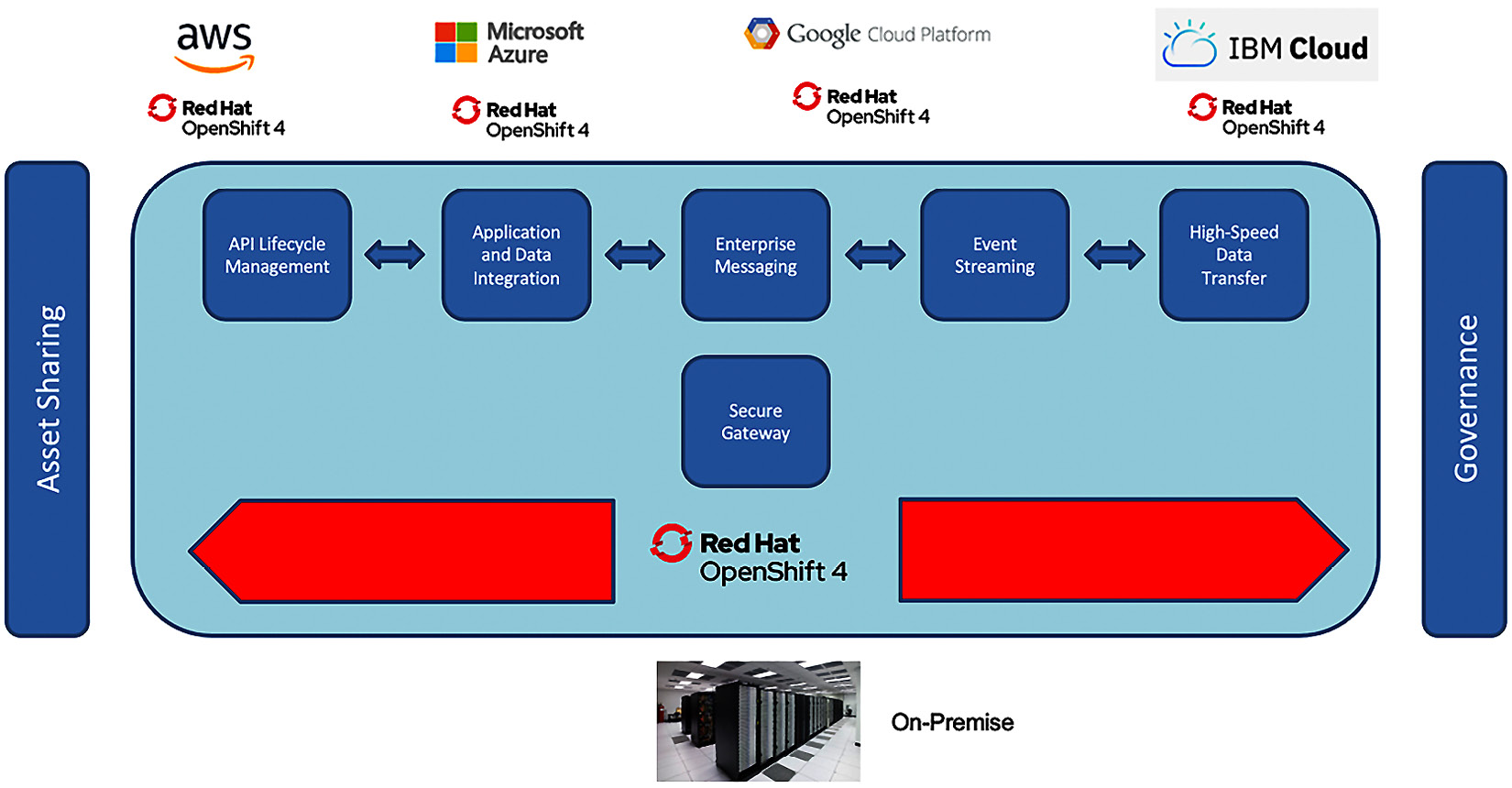
Figure 16.4 – Cloud Pak for Integration
As you can see, CP4I runs on multiple clouds as well as on-premise. This is accomplished by utilizing Red Hat OpenShift, which you learned about in the preceding section. CP4I is built using containers so agility, as well as scalability and resilience, are omnipresent. Portability is not an issue with container technology and OpenShift, so given the executive wish list, all the boxes are checked.
Without going into too much detail, the following are some of the highlights of CP4I:
- CP4I has a Platform Navigator component. It has centralized management and control over all the CP4I components.
- CP4I has an Asset Repository capability. It improves development agility with the reuse of integration assets.
- It offers Common Services. We can get logging, metering, monitoring, and many other key foundational services with IBM Common Services.
- All the functionality you have learned about API Connect is included here.
- It integrates all your business data and applications more quickly and is portable across any cloud.
- With a minimal ramp-up time, your existing on-premise App Connect developers can build reliable integrations using the skills they learned with App Connect Enterprise on CP4I.
- Send large files (SFTP) and datasets virtually anywhere, reliably, and at maximum speed.
- Utilize MQ to create persistent, security-rich connections between your on-premises and cloud environments.
Note
The added value of using CP4I beyond just API Connect is the ability for the enterprise to choose between a set of solution capabilities to build a complete solution and let API Connect be the method to connect the implementations.
From an API Connect standpoint, you just revisited OpenShift and Cloud Pak for Integration to round out your complete understanding of what motivates your organization and what it may be looking for in future modernization efforts.
Now that we have a better understanding of platforms such as OpenShift and Cloud Pak for Integration, transformation doesn't end here. Many people know that Artificial Intelligence (AI) has been a major force in cloud platforms. Let's now introduce you to another game-changer that meets one of the executive goals mentioned in this section—improved resilience and agility using artificial intelligence.
Understanding Artificial Intelligence for IT Operation (AIOps)
One executive goal that started to pick up steam before the pandemic was automation. Automation goes beyond DevOps. It encompasses efforts to reduce manual tasks and improve resiliency. Prior to the pandemic, many companies were performing Proof of Concepts (PoCs) using multiple tools to determine where automation could occur and which toolsets provided adequate coverage. You learned about Ansible Automation in Chapter 14, Building Pipelines for API Connect.
Pre-pandemic many companies were getting organized and gathering feedback on automation experience. While not fully implemented across the enterprise, some silos were showing the benefits of automation, but automation maturity has not been achieved. Various reasons for not reaching velocity are the need for skilled resources, the presence of undefined processes, cultural barriers, and the limitation of only looking at operational activities. The pandemic changed the focus.
During the pandemic, the initial efforts were forced. People needed to work from home, and that immediately put an emphasis on how quickly organizations were able to mobilize. Laptops needed to be procured, VPN and video conferencing became overwhelmed, and collaboration tools became predominately the means to communicate and connect remote resources. Those that had some automation benefited from those pre-pandemic efforts, but the need to have it done more quickly became apparent.
The reality of the pandemic and the associated changes that the organization made to keep their people safe and maintain business as usual were real eye-openers. Resiliency was redefined with greater clarity. Investing in automation throughout the organization became clearer and people and cultures began to change. Not only did they want more automation but they wanted the automation to be based on potential business changes. This is where AI plays a key role.
The role of AIOps
AIOps is used to enhance IT operations. With the myriad of data from events, logs, and other sources means the opportunity to ingest the information and allow machine learning to enable IT operations is possible. Some of the benefits you can achieve with AIOps are as follows:
- Improved response and resolution because AIOps can decipher root causes and suggest remediation faster than previous human troubleshooting.
- With AIOps machine learning, operations can be more predictive and proactive and will decipher alerts to identify critical events from lower-level events.
- With AIOps, operators can receive notifications based on thresholds and with relevant information to make a diagnosis and take corrective action faster.
From a Digital Transformation viewpoint, you may get a myriad of digital capabilities, so utilizing AIOps can help move past the complexities and relieve the burden on your IT teams. By taking this approach early on, you can avoid IT touchpoints and provide more agility and resilience as a part of the business goal.
While automation has been somewhat limited to on-premise data centers due to a hesitancy to perform automation on the complexity of cloud and multi-cloud resources, the utilization of AIOps can help alleviate the operational risks and concerns.
In Chapter 14, Building Pipelines for API Connect, we discussed automation for on-premise implementations but AIOps can certainly play a role.
Although the pandemic is continuing, the new normal has provided organizations clarity on how automation is a clear requirement. Extending that automation drumbeat into AIOps in the post-COVID era, you will see more adoption and capabilities going forward.
IBM, to bolster its capabilities with AIOps, has purchased Turbonomic. Turbonomic's platform uses AI to monitor and manage containers, virtual machines, databases, servers, and storage.
AI and Digital Transformation
The future of AI-Driven Cross-Cloud application operations using Turbonomics, an Application Resource Management (ARM), and the use of Instana for Application Performance Management (APM) for automating the monitoring and management of their applications, Digital Transformation is now capitalizing on AI power to drive more innovation and efficiency.
So far, the discussion has been around Digital transformation and how it can be a focal point during the pandemic. As you know, Digital transformation is a focus on enabling better products, services, experience, and business cultural change. Moving applications and data to the cloud is but one method being portrayed. When it comes to data, new technology is leading to a shift of data and processing of data closer to the user or the edge. Edge computing will be discussed next.
Exploring 5G Edge computing
When discussing Digital Transformation, a majority of the descriptions describe moving toward cloud platforms to modernize and also take advantage of operational cost factors. When you consider cloud platforms, there are the predominant players that have huge capacities that correlate to economies of scale.
Visually, you might imagine the cloud as a hub and any integrations being the spokes. This is the classic hub and spoke model as shown in the following figure. So, if you are multi-cloud you may have multiple hubs. In the case of hybrid, your on-premise applications are part of the spokes if you are focusing on cloud deployments.

Figure 16.5 – Hub and spoke cloud
The pandemic accelerated the move to the cloud as a means to support working from home and expand the business outside the wall of private data centers. Now, if you were to look closely at the cloud models, you would find that although the cloud platforms have geographically disbursed cloud locations, there are consumers that are still considerable distances away from any of the hubs. Therefore, APIs that are connected to the hub are dependent on the closeness of hubs. If those APIs are based on mobile technology, then the need for speed is dependent on wireless performance and bandwidth. This is where 5G and its increased bandwidth is solving the problem.
The cloud models have been successful for many years and continue to be successful and are improving, but is there another extension to cloud computing on the horizon? Yes, there is. With the 5G rollout continuing, it's now called 5G Edge computing.
To provide a little more context on why this is important you should understand the advantage of Edge computing. You'll learn about that next.
Advantage of 5G Edge computing
You can categorize Edge computing as the practice of capturing, storing, processing, and analyzing data closer to the consumer, where the application data is created. With cloud platforms, this extension removes the cloud as the primary resource for all data processing and allows collection and processing at the Edge.
Some of the advantages that Edge computing provides are as follows:
- Data can be captured, analyzed, and processed near the client without relying on cloud provider integration.
- Compute power is now available on the edge thereby reducing compute costs in the cloud.
- Various edge type models such as Internet of Things (IoT), manufacturing, financial, automotive, and Augmented Reality/Virtual Reality are greatly enhanced with 5G to support wide-area coverage, low latency, and cost-efficiency.
As you know, 5G is now being rolled out and with that, these new business models are being added to the digital transformation. 5G will improve performance and many Telcos are preparing to move more processing power to the edge. Figure 16.6 provides a graphic on how Edge computing enables the capturing, storing, processing, and analyzing of data near the client, where the data is generated, instead of in a centralized data-processing warehouse:
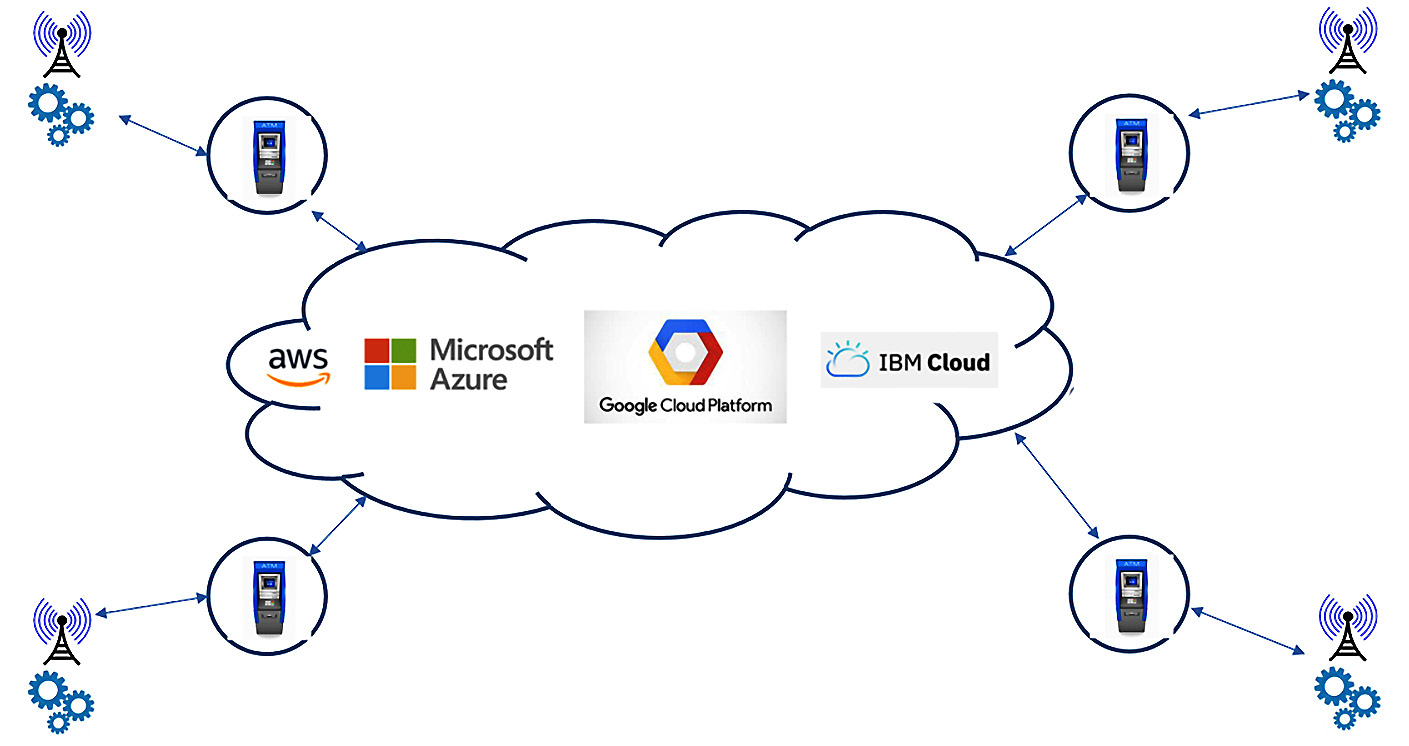
Figure 16.6 – Edge Computing
In Figure 16.6, the circled areas represent APIs running on various implementations that could be phones, kiosks, and other consumers. By building out an edge messaging integration, businesses can have a re-imagined infrastructure where they can take advantage of the speed of 5G, represented by the cell towers, with extremely low latency.
IBM is preparing for this journey too. With the purchase of Turbonomic, it will use Turbonomic network performance management tools for enterprise 5G deployments.
While Edge computing is still in its infancy, you can imagine the types of capabilities that can be accomplished using 5G and the edge. Just think, events are triggered from data sources and received by devices immediately, whether it's database updates, messages/events, or secure streaming. All this can be possible as you move towards edge computing with 5G.
Not only did you learn about how AI can assist with digital transformation automation but also about the next extension of cloud technology, Edge computing. With Edge computing, you learned why it provides value above and beyond just using a cloud platform. It allows data to be closer to the edge where it impacts the user the most. As Telcos continue to upgrade their networks with 5G, more business models will appear that support improved AR/VR, IoT, financial and automotive industries, and others.
Summary
In this chapter, we discussed the impact of the COVID-19 pandemic and how it rewarded those who have achieved some digital transformation and motivated others to accelerate their efforts. With all change there is opportunity. You learned that as you move towards a hybrid cloud implementation, some considerations must be made about the platform and toolset you utilize to ensure you maintain the flexibility necessary to stay agile and cost-aware. You were introduced to OpenShift as a platform to address learning curves of existing resources as well as to provide a common platform that can support multi-cloud, on-premise, and portability. You also learned that OpenShift is more adaptable and provides more out-of-the-box features than DIY Kubernetes. You learned that DIY requires your organization to do the following:
- Build a full DIY Kubernetes stack
- Test your Kubernetes stack
- Stay abreast of Kubernetes changes
- Patch security CVEs (weekly)
- Troubleshoot Kubernetes stack problems
- Repair Kubernetes problems
Utilizing OpenShift helps organizations move toward modernization more comfortably.
You also learned about IBM's hybrid cloud enabling using Cloud Pak for Integration (CP4I). Integration is still key whether you are running on-premise or in one or many clouds. Digital transformation may be a mix of various technologies and SaaS applications and integrating that mix will take the proper set of tooling.
The combination of OpenShift and CP4I is proven technology that improves the success factors of digital transformation and modernization.
You also learned about how AI is taking IT operations to a new level of efficiency. With AIOps the vast amount of data collected in events and logs can be utilized to allow machine learning to improve operations. Challenges that hindered people-centric operations such as time to troubleshoot and the remediation of outages have been reduced and are more proactive than reactive.
Finally, you learned about late-breaking changes in API Connect and how the delivery of fixes and enhancements are managed.
You have obtained so much knowledge of API Connect over these chapters. Hopefully, you will take this knowledge and apply it to your current organization to make it a rich implementation on your digital transformation journey. Best of luck with your implementation and continued success.
